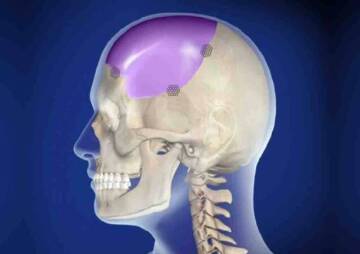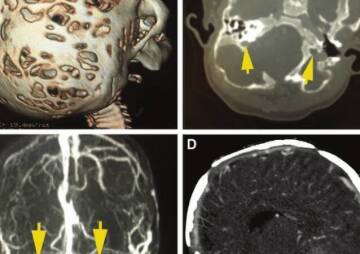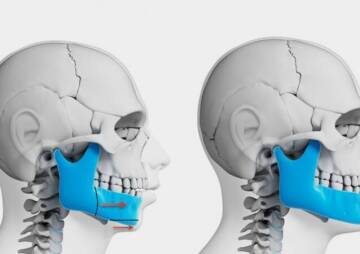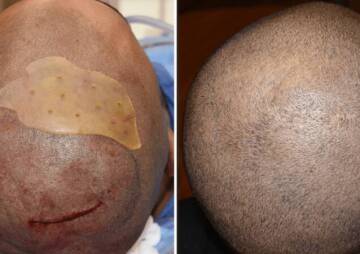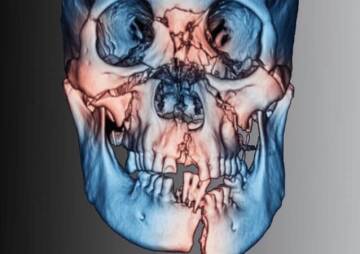-
Category
Craniomaxillofacial Surgery
Orthopedic Surgery
Spine Surgery
Orthopedic Implants
Hip Surgery
Knee Surgery
Pectus Excavatum
Bone Graft
Disinfectants
Healthcare
Risks of cranioplasty
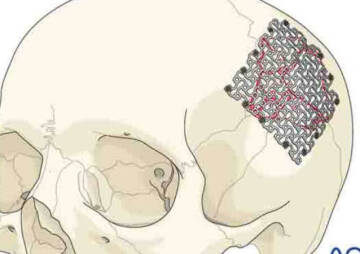
Seems cranioplasty is common and painless plastic surgery, but this surgery has up to 41% complications and risks
Cranioplasty is a plastic surgery that removes a skull deformity. Deformity of the skull can be caused by pressure-reducing surgery on the brain, tumor resection surgery, accidents, congenital diseases, and many other causes. Seems cranioplasty is common and painless plastic surgery, but this surgery has up to 41% complications and risks. From infection, autologous flap resorption, and hematoma to seizures and poor aesthetic results. In this article, we will review the possible complications of cranioplasty surgery.
Ordinary or high-risk surgical cranioplasty?
Cranioplasty (CPL) is a secondary surgery that returns the skull deformed bone to normal. Brain protection, restoration of cerebrospinal fluid (CSF) dynamics, improved cerebral blood flow, improved cerebral nerve function, and beauty are some of the reasons that make cranioplasty so important. CPL seems to be an easy and routine surgical procedure, with few risks and few complications; But it is really risky because at least one of three skull reconstructions has serious side effects. Various factors influence the occurrence of these complications, including the time interval between decompression surgery on the brain and cranial reconstruction, the materials used in the surgery, the patient's age and health condition, and the surgeon's experience.
What are the risks associated with cranioplasty?
The most common complications of CPL are infection, bone resorption, bleeding on or under the prosthesis, seizures, and poor cosmetic results.
Infections
CPL infections depend on certain factors, such as the time of surgery and the materials used to transplant the CPL. The time allocated for cranial bone regeneration after brain surgery is between one month and one year. The best time for reconstructive surgery is between three and six months after brain surgery. Cranioplasty surgery performed before three months is called early surgery, and if it is after six months, it is called delayed surgery. Early and delayed CPL has a high risk of infection.
On the other hand, the material used for skull reshaping also plays a role in causing infection after cranioplasty. It is better to choose a substance that is less likely to be infected. For example, the use of autologous bone in CPL has a lower risk of infection.
Of course, patients' health status, duration of surgery, number of head injury sites, antibiotics used before and after surgery, and length of hospital stay also affect the rate of infection after CPL surgery.
Bone resorption
Bone resorption is one of the most important complications of cranioplasty, especially in children. Volumetric growth of intracranial structures, which occurs for 80% during the first two years of life, in these conditions there is a gap between the two main and grafted bone pieces due to brain growth. Of course, this problem can be solved by using materials such as acrylic resin, ceramics, and hydroxyapatite materials.
Hematoma
Bleeding under or on the prosthesis is one of the risks of cranioplasty. When head reshaping is performed, there is a gap between the brain and the skull that may be easily filled by a hematoma after surgery. This has nothing to do with the type of prosthesis and may be due to soft tissue surgery (muscles, subcutaneous layers) without precise homeostasis, prosthetic dural compression, bleeding from the edges of the injured skull bone, and bleeding from the scalp arteries.
Convulsions
Seizures are also one of the risks after cranial reconstruction. Of course, this is not very common, but in cases where skull reshaping is performed on both sides of the skull or the patient is old, there is a possibility of seizures. Seizures may appear immediately after surgery or within 24 hours after surgery. In some cases, it happens up to seven days later. To reduce the risk of seizures, it is necessary not to manipulate too much and not to squeeze the brain during cranioplasty.
CSF Shrinkage
This problem may occur in patients with cranioplasty who have brain damage to meningeal tissue or in patients who have had multiple surgeries. But it does not cause any particular problem and can only be solved by installing a CSF drainer. However, the presence of subcutaneous CSF increases the risk of infection.
Poor beautification results
After deformed cranioplasty, the skull may not produce the desired results. Of course, this rarely happens, but it is still part of the risks of cranioplasty surgery. For example, hair and soft tissues do not completely cover the regenerated area. This problem may be due to irregular modeling of acrylic resin and improperly shaped prosthesis.
Despite the risks of cranioplasty, is it right to do it?
CPL is a type of head plastic surgery that has very high complications and risks. These cranioplasty side effects may be due to the timing of surgery, improper prosthesis materials, concomitant CSF abnormalities, or systemic diseases.
Despite these risks, CPL is considered by many physicians to be an easy and common operation and is sometimes performed by surgeons who do not have sufficient skills in cranial reconstruction. The inexperience and skill of the surgeon in cranioplasty will increase the risk of complications and probably will not have the desired aesthetic result. Especially if the surgery is performed with materials such as acrylic resin or autologous bone.
Cranial reconstruction is a delicate operation that must be performed with precise and delicate surgical methods. This surgery can only be performed by carefully assessing the patient's general health and the neurological conditions of the skin and scalp. The risk of cranioplasty can be reduced by assessing the risk of failure and with the help of surgeon experience.

